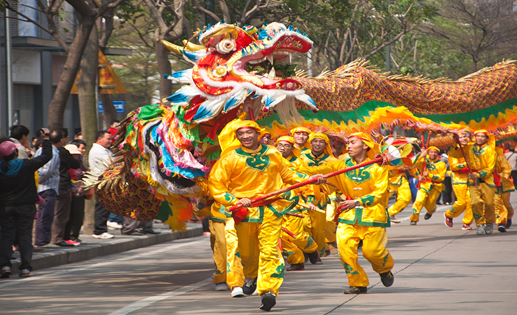China’s 73rd year of Independence: India- China relations
-
Context

- Recently China has celebrated its 73rd National Day, commemorating the founding of the People's Republic of China.
-
The History of China's Independence Day
- On October 1, 1949, the official victory ceremony celebrating the inauguration of the People's Republic of China was held at Tian'anmen Square.
- Tian'anmen Square is now a monument in the city centre of Beijing, China's capital.
- Mao Zedong, who was the first chairman of the People's Republic of China, raised the first Communist national flag of China in person among 300,000 soldiers.
- On the following day, the new government passed the "Resolution on the National Day of the People's Republic of China" and declared October 1st to be China National Day.
-
China National Day Celebration
- Since the first inaugural ceremony, there is a tradition is to start the National Day celebrations with a special flag-raising ceremony at Tian’anmen Square.
- The Square is decorated with flags and portraits, and uniformed troops will march out to start the flag-raising ceremony at sunrise.
- China National Day is celebrated throughout the Chinese Mainland
-
Evolution of India- China relationship
- Before the mid-20th century, India-China relations were minimal and confined to some trade and exchange of pilgrims and scholars. Interactions began after India’s independence (1947) and the Communist revolution in China (1949).
- Nehru and Zhou signed the Panchsheel Treaty on 29 April 1954 to lay the roadmap for stability in a region (Hindi-Chini Bhai-Bhai) as India acknowledged Chinese rule in Tibet.
- In 1962, China's People's Liberation Army invaded India in Ladakh, and across the McMahon Line in the then North-East Frontier Agency. After the conflict, relations were in a freeze.
India-China Bilateral Relations:
- China and India are ancient oriental civilizations living side by side for thousands of years, and the only two major developing countries in the world with a population of more than one billion.
- India-China Relations or Sino-Indian relations or Indo-China Relations refers to the bilateral relationship between the People’s Republic of China (PRC) and the Republic of India.
- In 1950, India and China officially established diplomatic relations.
- We have jointly advocated the Five Principles of Peaceful Coexistence, which have become the basic norms guiding bilateral and international relations.
- India was the first non-socialist country to establish diplomatic relations with China.
Issue of concerns in India-China relations:
- Belt Road Initiative: India has objected to this, since its inception on grounds of violating its sovereignty pointing to China Pakistan Economic Corridor.
- India’s support to China on global issues has not led to Beijing’s reciprocation for instance: China opposed India’s permanent membership in UN Security Council and entry into NSG.
- Trade imbalance heavily in some favour of China: In 2020-21, the trade deficit was recorded at $48.6 billion.
- Two countries failed to resolve their border dispute and steadily established military infrastructure along border areas Indian media outlets have repeatedly reported Chinese military incursions into Indian territory
- China's strong strategic bilateral relations with Pakistan and other neighbouring countries like Nepal, Bhutan and Sri Lanka are the cause of concern as these countries act as buffer states.
- Tibet & Dalai Lama Issue: This led to the first-ever war between these two nations. China is very sensitive about territorial sovereignty and having Dalai Lama run a shadow government in India has historically been a major irritator for them.
- Two border disputes: One in a region called Aksai Chin and another in a region called Arunachal Pradesh. Both nations claim both regions although China controls the former and India the latter.
- Water issue: The dispute between India and China is mainly regarding the Brahmaputra River flowing through the two countries.
- South China Sea (SCS) issue and India: China opposes India’s oil exploration in the SCS (which has been undertaken at Vietnam’s request) by calling the area of exploration a ‘disputed’ area and asserting ‘Chinese sovereignty’ over the SCS in the ‘historical’ context.
Current Situation:
- The border situation has been overall stable despite a few territorial scuffles. Both sides have maintained communications and consultations via diplomatic and military channels.
- The two sides agreed to disengage at Patrolling Point (PP) 15 in the Gogra-Hot Springs area, which has been one of several “friction points” where PLA soldiers transgressed and have amassed troops since April 2020.
- Buffer zones have now been established by the two sides in five locations, including in Galwan Valley, north and south of Pangong Lake, and at PP17A in Gogra.
- We have been optimizing the visa application process for Indian citizens to travel to China and facilitating people-to-people exchanges.
- Both of our leaders have recently attended the BRICS and SCO Summits.
-
Conclusion:
Neither Beijing nor New Delhi can afford to turn a blind eye to the huge benefits that intense economic cooperation can potentially bring about. Therefore, both countries are trying to capitalize on mutual economic benefits while working hard to contain political friction within manageable limits.

